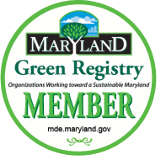Hazardous Waste Management
- Background
- Training
- Hazardous Waste Guidelines
- Universal Waste
- Other Regulated Waste
- Hazardous Materials Reuse Center
- Points of Contact
Background
The Medical and Environmental Management Division (MEMD) manages hazardous waste, universal waste, and other regulated waste generated at Goddard Space Flight Center (GSFC). Hazardous waste is a solid waste that can pose a substantial or potential hazard to human health or the environment when improperly managed either because it exhibits at least one of four hazardous characteristics (ignitibility, corrosivity, reactivity, or toxicity) or because it has been specifically listed by the U.S. Environmental Protection Agency (EPA) as hazardous (EPA Listed Wastes). A hazardous waste has specific disposal requirements and must not be disposed of through sink, floor or storm drains, or in the trash. It should not be mixed with other chemicals. The MEMD should be contacted prior to the generation of any waste. This will allow us to guide the generator in the proper waste disposal procedures.
At GSFC, the variety and complexity of activities that generate hazardous waste leads to a diverse waste stream. In 2014, GSFC disposed of 15,845 pounds of corrosives; 16,089 pounds of flammables; 1,261 pounds of toxic wastes; 4,432 pounds of batteries; and 1,558 gallons of used oil. GSFC hazardous waste is transported to a permitted storage and disposal facility for final treatment and disposal.
- Comply with environmental laws;Prevent pollution and conserve natural resources;
- Explore advances in environmental technology;
- Communicate with the Goddard family, our partners, and the public;
- Integrate environmentally sustainable practices into our daily work activities; and
- Continually improve our environmental performance.
Annual Hazardous Waste Training is offered in the classroom by the MEMD during the Center’s Safety Awareness Campaign week. The training is also available through SATERN. The training is required annually for hazardous waste generators, satellite accumulation area points of contact, personnel responsible for any outdoor storage of potentially polluting materials, and their supervisors. To access the training, go to the SATERN web site and browse the course catalogue. The 2017 hazardous waste management training slides (for reference only) are available as well.
Some general hazardous waste guidelines are listed below:
- Containers - Generating activities must ensure that wastes are properly contained. Containers must be in good condition, suitable for the waste type, closed tightly, upright, and sturdy. MEMD provides the generator with a labeled container.
- Labels - Each waste container must be labeled with the identity or name of the chemical. If the container holds a hazardous waste, the words "Hazardous Waste" must also be included on the label. Used oil containers must be labeled with the word "used" rather than "waste”. Labels are provided by MEMD.
- Quantity Limit - Generators must contact the MEMD, at extension 6.9233 or e-mail gsfc-hazwaste@lists.nasa.gov, upon accumulating 45 gallons of hazardous waste or one (1) quart of acute hazardous waste.
- Code 200 Management Operations Services and Information (MOSI) Portal - Use the MOSI portal to request a waste pickup, if you need a new container or if you are generating a new waste stream. All containers awaiting disposal should be under the control of the generator, stored away from flame or other incompatible chemicals, and within secondary containment.
- RCRA Empty - Hazardous waste containers or liners are empty when all wastes that can be removed have been removed, and no more than one (1) inch of residue remains on the bottom or no more than three (3) percent by weight of the total capacity remains (containers fewer than 110 gallons). Special requirements exist for containers which held acute hazardous waste or compressed gas. Containers, which do not meet all of these requirements, must be disposed of as hazardous waste.
Universal wastes are hazardous wastes that are subject to less stringent regulations. The universal waste regulations streamline collection requirements for certain hazardous wastes in the following categories: batteries, pesticides, mercury-containing equipment (e.g., thermostats) and lamps (e.g., fluorescent bulbs). The regulations govern the collection and management of these widely generated wastes, thus facilitating environmentally sound collection and proper recycling or treatment. For more information on how to properly manage universal waste see the Universal Waste Information announcement.
Other regulated wastes are wastes that do not meet the definition of hazardous waste, but are considered toxic or environmentally unfriendly, such as used oil, antifreeze, spill residues, and contaminated soil.
Hazardous Materials Reuse Center
Turn in unwanted hazardous material (HM) using the MOSI system. If it is reusable, we offer it to other HM users here on Center. More information and a list of currently available materials can be found in our HM reuse center.
Program Contacts
For emergencies dial 911 or (301) 286-9111 from a mobile or other non-GSFC phone.
For waste disposal procedures or to arrange for a waste pickup, call the hazardous waste line at extension 301-286-9233 or e-mail gsfc-hazwaste@lists.nasa.gov.
Lixa Rodriguez-Ramon 301-286-4613





